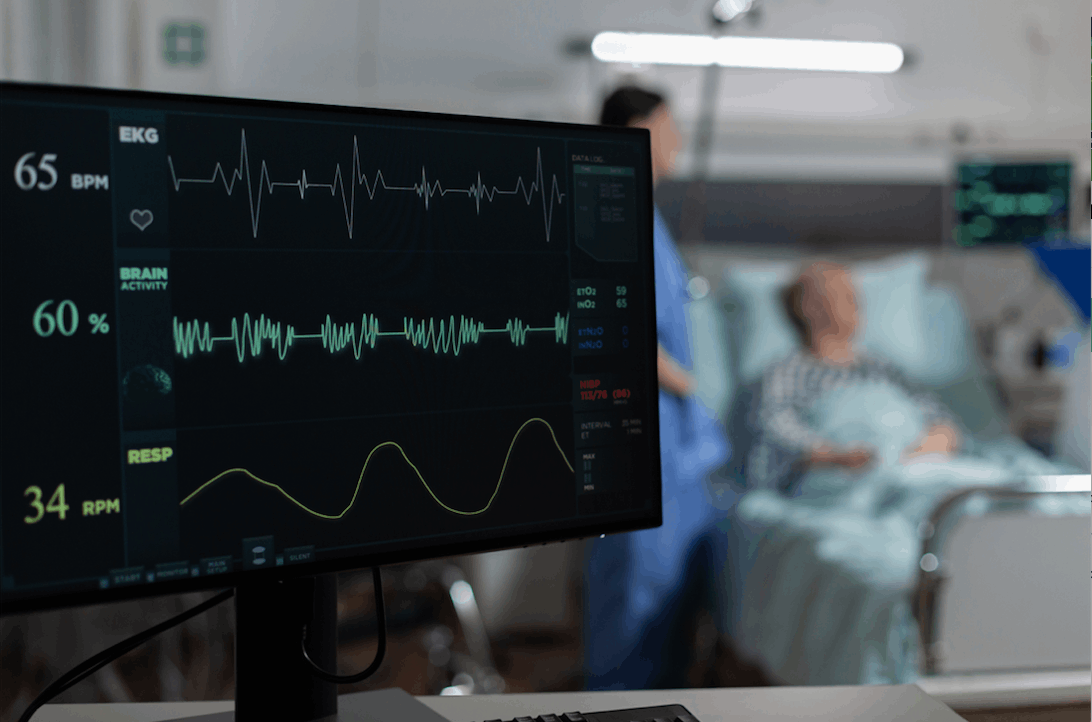Healthcare providers have been using routine hospital tests to evaluate patients’ health for decades. Electrocardiogram (ECG) tests are frequently a part of these tests. This standard procedure involves attaching small electrodes to the patient’s chest to examine the heart’s electrical activity and rhythm. Predicting the risk of death for patients has proven to be a difficult task for healthcare professionals, despite the wealth of information gathered from these tests. But with the advent of machine learning programs, predicting the risk of death has become more efficient, accurate, and personalized. In this article, we explore how machine learning programs are revolutionizing healthcare by predicting the risk of death on the basis of the results from routine hospital tests.
Traditionally, a medical professional such as a doctor or nurse analyzes hospital ECG readings in person. However, nowadays, researchers are utilizing artificial intelligence to extract additional data from these results, thereby enhancing both medical treatment and the overall healthcare industry.
Recently, a research study was published in which a team of researchers developed and trained machine learning programs. The programs were trained using 1.6 million ECGs taken between 2007 and 2020 from 244,077 patients residing in northern Alberta. The algorithm accurately predicted the risk of death from any cause within one month, one year, and five years with an accuracy rate of 85% by classifying patients into five risk groups ranging from low to high. The accuracy of the predictions increased when demographic data (such as age and sex) and results from six common laboratory blood tests (creatinine, kidney function, sodium, troponin, hemoglobin, and potassium) were included.
Lead researcher Padma Kaul, who is a professor and co-director of the Canadian VIGOUR Centre, states that the study is a demonstration of how routinely collected data can be utilized to improve individual care and facilitate the healthcare system to gain knowledge through experience.
According to the lead author, their objective was to utilize novel artificial intelligence and machine learning techniques to scrutinize the information and distinguish individuals who are more susceptible to mortality. The authors also state that machine learning models can effectively convert routinely collected clinical data into valuable knowledge that can aid in decision-making at the point of care. This can be a crucial component of a learning healthcare system.
Predicting the Risk of Death with Machine Learning
In case of hypertension or indications of heart disease such as chest discomfort, difficulty breathing, or an abnormal heartbeat, a medical professional will prescribe an electrocardiogram test. During the initial stage of the research, the ECG outcomes of all the patients were scrutinized. However, Kaul and her associates aspire to enhance these models for specific patient subcategories. Additionally, they aim to refine their prognostications to exclusively consider fatalities linked to heart-related ailments rather than mortality resulting from all possible causes.
According to Kaul, Alberta has a favorable advantage for analyzing data at the population level due to the abundance of information gathered and stored within the healthcare system that is funded by the public. There is a strong push to investigate how AI can improve the delivery of healthcare services. This is a glaring example of the efficient application of data from Albertans.
Kaul suggests that employing high-performance computing has an advantage over humans in that it can rapidly detect patterns among numerous data points.
To enhance the quality of care and results, the researchers aim to utilize healthcare system-generated data to acquire knowledge and then integrate it back into the system. This is the fundamental concept of a learning healthcare system.
Conclusion
The research indicates that deep learning models based on ECG can be utilized to detect individuals who are at high risk of short or long-term mortality. These models exhibit comparable performance in both genders and can be enhanced by incorporating data from lab tests that are routinely conducted. The researchers plan to further study and evaluate the effectiveness of risk assessment based on ECG data in real-world clinical settings.
Article Source: Reference Paper | Reference Article
Learn More:
Dr. Tamanna Anwar is a Scientist and Co-founder of the Centre of Bioinformatics Research and Technology (CBIRT). She is a passionate bioinformatics scientist and a visionary entrepreneur. Dr. Tamanna has worked as a Young Scientist at Jawaharlal Nehru University, New Delhi. She has also worked as a Postdoctoral Fellow at the University of Saskatchewan, Canada. She has several scientific research publications in high-impact research journals. Her latest endeavor is the development of a platform that acts as a one-stop solution for all bioinformatics related information as well as developing a bioinformatics news portal to report cutting-edge bioinformatics breakthroughs.









